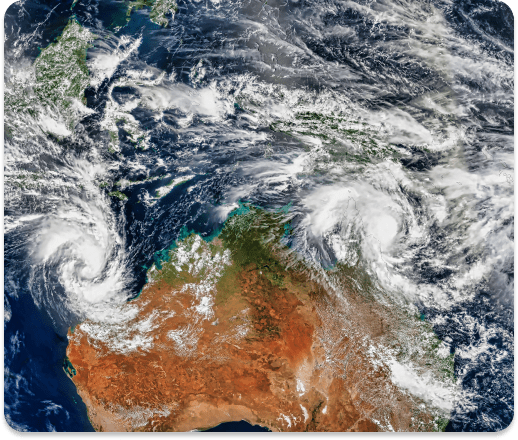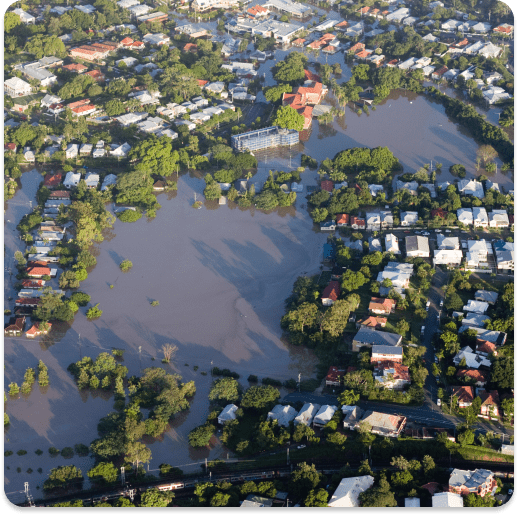
More than two thirds of Australians live in a local government area impacted by one or more natural disaster over a 12-month period, says KPMG.
Chances are your business is among the 75% of Australian SMBs without a current business continuity plan.
So, how can you be better prepared for natural disasters, including bushfires, floods, cyclones and storms?
The Insurance Council of Australia (ICA) recently welcomed extra funds for disaster preparedness announced in the 2024-25 Budget. This funding is essential to help improve our nation’s resilience to natural hazards and supporting Australians before, during, and after disasters.
But those government dollars will only go so far – here’s what you can do to complement that investment.
Why Disaster Preparedness is Key for SMBs
Natural disasters can strike without warning, and SMBs are often hit the hardest. That’s because many of those businesses operate with tight margins and limited resources. Hence, they’re vulnerable to the financial instability and operational disruptions that come with disasters.
Immediate and long-term effects of disasters on SMBs include:
- Temporary disruptions
- Higher insurance and operational costs
- Lower customer confidence, and
- Disruption to travel and supply chains.
By spotlighting disaster preparedness and resilience, SMBs can help protect their long-term sustainability and build a buffer against significant losses.
Budget Funding Overview: Strengthening National Resilience
The 2024-25 Federal Budget allocates funds to boost the capacity of the National Emergency Management Agency and the Department of Social Services. The aim of these funds is to support Australians in financial distress during crises.
As well, the Government’s Disaster Ready Fund (DRF) is on track to shrink insurance costs. It’s making this move by minimising physical risks to homes and communities. That’s great news for SMBs keen for smaller premiums.
The Role of Insurance in Disaster Recovery
Insurance is essential to help businesses bounce back after a disaster. A right-fit policy can offer much-needed financial support to rebuild and continue operations, so your SME will benefit through reduced downtime and not having to permanently shut-down.
However, as the ICA’s CEO Andrew Hall, the cost of insurance premiums has been increasing due in part to higher disaster costs. Mitigating physical risks through appropriate preparedness can help reduce such costs, so insurance premiums are affordable for all.
Key Moves and Policies to Help SMBs
Several DRF initiatives will strengthen disaster resilience. These include investments in:
- Land-use planning
- Building codes
- Risk mitigation programs
- Skilled labour development
- Data investment, and
- Cyber security measures.
Tax and regulatory reforms are also on the agenda to provide support for businesses to better prepare for and respond to disasters.
One initiative to watch is a potential permanent voluntary program for buybacks and home-raisings in areas prone to extreme flood risks. This move aims to prevent damage before it occurs. The Australian National University has called for a national relocation authority to manage such a program because it can be contentious.

How SMBs Can Benefit from New Funding
The new funding and policies hand numerous benefits to SMBs. Reduced insurance premiums and access to resources for disaster preparedness are definitely welcome.
Be sure to check out these initiatives, too. Keeping in the know means your business is taking proactive steps to help protect itself and play your role in community resilience on a local scale. Your business continuity may well depend on getting involved.
Practical Steps for SMBs to Boost Disaster Preparedness
To help you get started on your disaster preparedness journey, here’s a checklist of practical steps:
- Review and update your insurance policies, including both property damage and business interruption covers, to ensure up-to-date coverage that reflects your SMB’s current risks
- Invest in risk mitigation measures, such as physical improvements to your site to minimise the impact of potential disasters
- Tap into government resources and support programs, such as through the DRF and other government initiatives (such as this site for NSW-based businesses and elsewhere for low-interest loans, plus this one for Victorian SMBs)
- Develop and practice disaster response plans, so everyone in your team knows their role if an emergency happens, and
- Train and update employees about disaster preparedness and safety protocols, so they’re all in the know about evacuation procedures, emergency contacts, and more.

Taking Proactive Steps to Protect Your Business
Disaster preparedness is about having a plan and taking action to protect your business, employees, and community. The extra Federal Budget funds present a great opportunity to enhance your SMB’s resilience and minimise risks.
So, reach out to us, as your broker or adviser, so we can work with you to review your current disaster preparedness plans and insurance coverage. We can also discuss how the new funding and policies can benefit your business to ensure you’re as protected as possible against future disasters.

